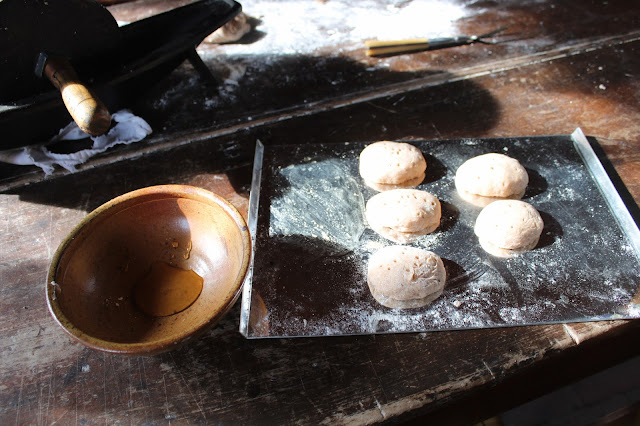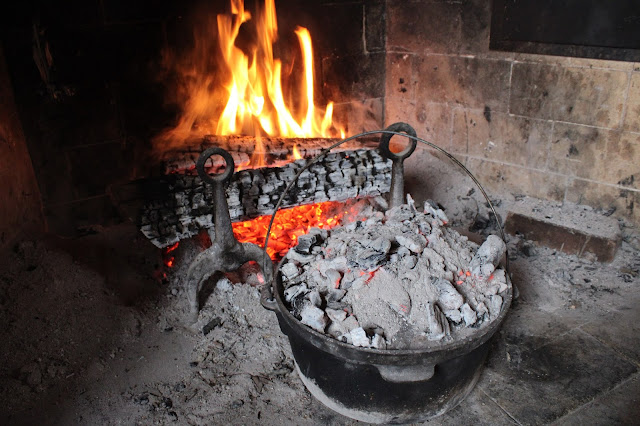Cake for breakfast? Why not. In fact in the early 19th century cakes and other pastries were the norm at breakfast tables. Sometimes these cakes were in the form of puffy biscuits, as is the case with today's recipe. This is another economical dish that hails from the 1803 publication The Frugal Housewife by Susannah Carter.
Saturday, January 23, 2021
1803 Breakfast Cakes
Monday, January 18, 2021
An Illinois Bread Recipe That Dates Back to the 1750s
This is an 18th century U.S. recipe for bread from Illinois (Kaskaskia). The recipe has been kept in one family since the 1750s. It is very economical and is simple to make. It is so simple that it was no doubt still popular in the early 19th century as well. It was very normal for a lot of early to mid 18th century recipes to still be popular even up till the 1840s.
This recipe was gifted to the 1820 Benjamin Stephenson House by the family whom it originated from. It has been kept in their family since the 1750s when their French-speaking ancestors moved to Kaskaskia. There was a large French population in Kaskaskia, as well as in St Louis, during this period.
I have baked this bread half a dozen times now and it has never failed me once. It is incredibly easy to bake and I am not surprised why it has been a go-to since the 1750s! Let us begin.
Recipe:
3 cups of all-purpose flour
1-1.5 cups of warm water
1-2 tablespoons of honey or 1 tablespoon of molasses
1 heaping tablespoon of dry, active yeast
Directions:
Combine 3 cups of flour with 1 tablespoon of yeast in a bowl. Pour in 1 to 1.5 cups of warm water. Be sure that the water is not boiling hot. We only need for the water to be steaming, not boiling. Add your sweetener whether that is honey or molasses and mix until you have formed a ball of dough. Set your bowl aside in a warm room to rise for one hour. You may cover your bowl with a towel or even a jacket to keep it warm. After one hour remove your dough onto a well-floured work surface and knead with floured hands until your dough is no longer sticky. Shape as desired and place onto a cooking pan. Bake in a 350 degree oven for 30-40 minutes until golden brown as shown in my photos.
Dough Nuts aka Donuts From 1803
Why do modern donuts have a circle in the center while these do not? Ring shaped donuts did not hit the market until the 1840s. A problem ...

-
Funeral cookies, also called funeral biscuits, were handed out at wakes to friends and family of the dead. Those who were visiting to show t...
-
This is an 18th century U.S. recipe for bread from Illinois (Kaskaskia). The recipe has been kept in one family since the 1750s. It is ver...
-
A cake with a story! Gingerbread Lafayette is named after General Lafayette, a French military officer who commanded American troops in th...
























